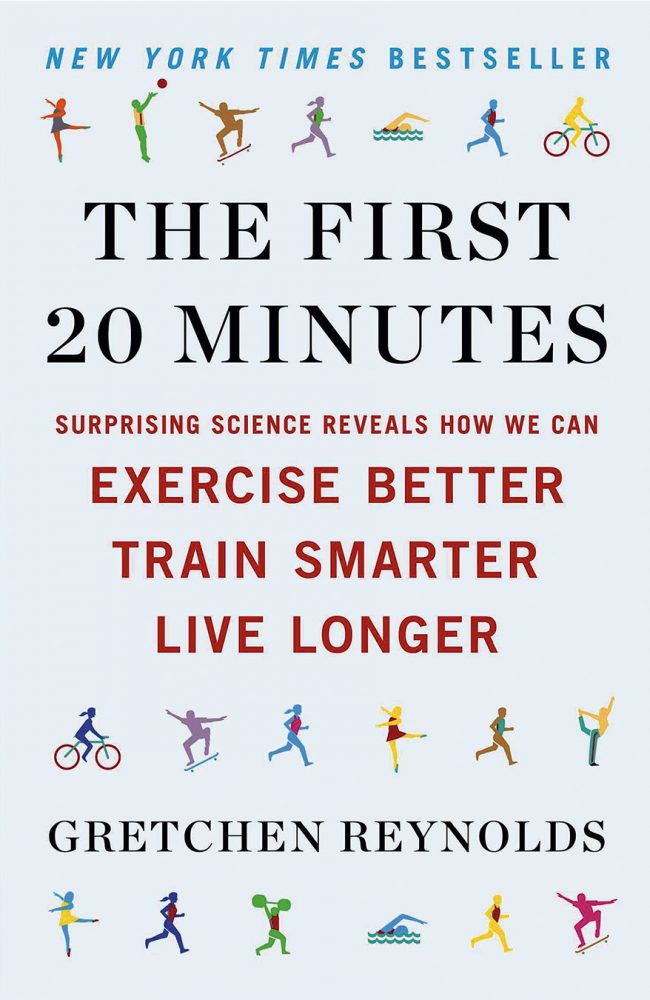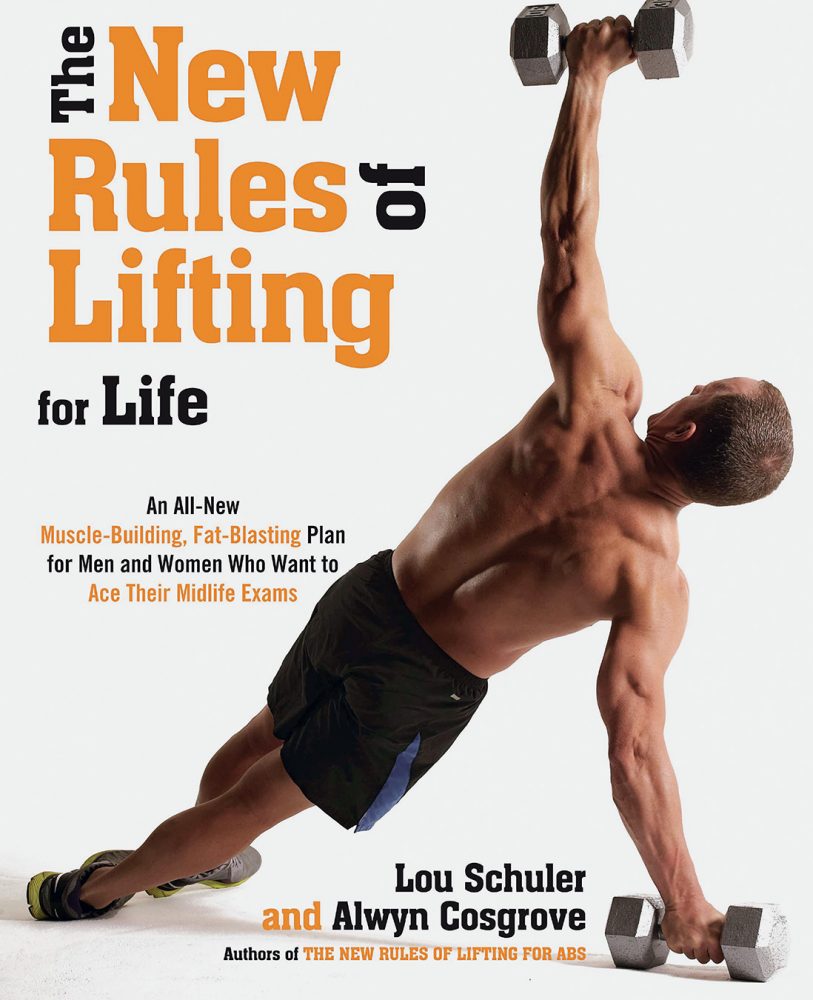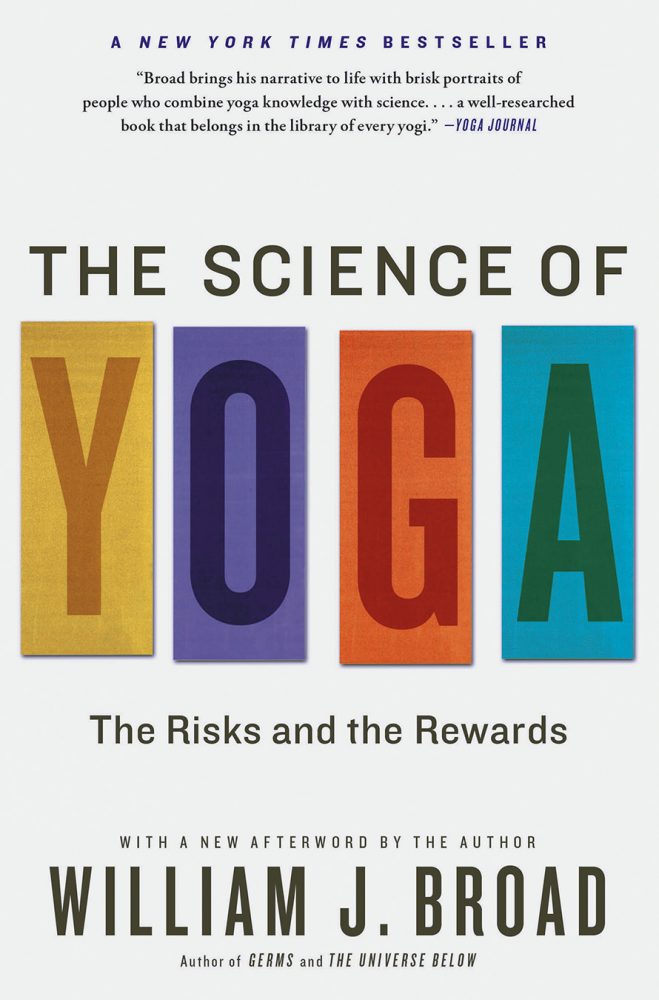The headlines are irresistible. All you need is 20 minutes of cardio per workout! Crunches are pointless! Yoga actually slows the metabolism!
The current vogue for entertaining, well-written non-fiction has expanded into the frequently overblown and tedious field of exercise books. Here are three titles you won’t want to miss, even if they have no discernible effect on your exercise habits.
Gretchen Reynolds, author of the exhaustively titled The First Twenty Minutes: Surprising Science Reveals How We Can Exercise Better, Train Smarter, Live Longer, has gathered together all the latest research on the most effective ways to exercise and gain the most benefits from your efforts. The book is full of fascinating information about stretching, weight loss, the effect of exercise on mental capacity, and the best methods for recovering from your exertions. (Goodbye ibuprofen and Gatorade, hello chocolate milk!)
Because much of the material is drawn from recent research, there is a somewhat unnerving reliance on tests done on mice. For this reader, it was a reminder that fitness really starts with not having the misfortune to be born a laboratory mouse. As a result of reading The First Twenty Minutes, I developed the world’s simplest exercise program. The weekly goal was 2 hours 30 minutes of moderate activity, such as brisk walking; 75 minutes of vigorous aerobic activity, weight training two times per week; HIIT (high intensity interval training) 20 to 30 minutes two times per week. Number of weeks program was followed: 2.
The New Rules of Lifting for Life (subtitle far too long to reprint here) by Lou Schuler and Alwyn Cosgrove was the most engagingly written of these three titles. Schuler manages to be bracingly direct without hectoring and even avoids the faux self-deprecating humble-bragging so common among exercise professionals. The book is the fourth in the duo’s bestselling New Rules series and the first aimed at those beginning to feel some age-related limitations. If post-workout soreness is any indication, the program is quite effective. Be forewarned that some of the exercises are unusual enough to make doing them embarrassing. It’s also awkward to wander around the gym, large book in hand, flipping from chart to diagram and looking every inch the person who does not have a personal trainer. In addition to the welcome news that crunches are passé, the New Rules provides an approach to weight training that will entertain everyone else in the gym.
William J. Broad has been widely interviewed about his book The Science of Yoga: The Risks and the Rewards because in it he challenges some of the current orthodoxy. He’s quite fearless in tackling the most pervasive myths, such as the idea that pranayama (yogic breathing techniques) adds more oxygen to the cells. This has been proven to be a scientific impossibility. In fact, some breathing exercises and postures actually deprive the body of oxygen. He dispels the idea that yoga always increases the metabolism and helps practitioners to lose weight. In fact, many types of yoga slow the metabolism. Even the most challenging styles, such as Ashtanga and Power Yoga, provide fewer cardio benefits than slow jogging. The phenomenon of the extremely fit yogi probably stems more from the increased body awareness, discipline, and muscular development.
Broad is also clear-sighted about the potential for injury and the lack of standards inside the exploding yoga scene. Some of the oldest and best-established styles, such as Iyengar, have rigorous training programs. On the other hand, the yoga classes found in places like all-inclusive resorts or in the local community centre may be offered by teachers with almost no training. In addition, it’s not uncommon for yoga teachers to push students and even themselves to the point of injury. Yoga is often billed as a cure-all, but in fact the rate of injury is serious and noteworthy.
In spite of the undercutting nature of some of his revelations, Broad points out the many powerful benefits of yoga, including stress relief, physical therapy, muscular development, and improved mental health, sexual function, and flexibility. As a result of reading the book, I’ve continued to practise yoga, but have stopped doing headstands and shoulder stands and have come to terms with the fact that I may never be able to touch my toes.
Click here for more Active Vancouver stories.











